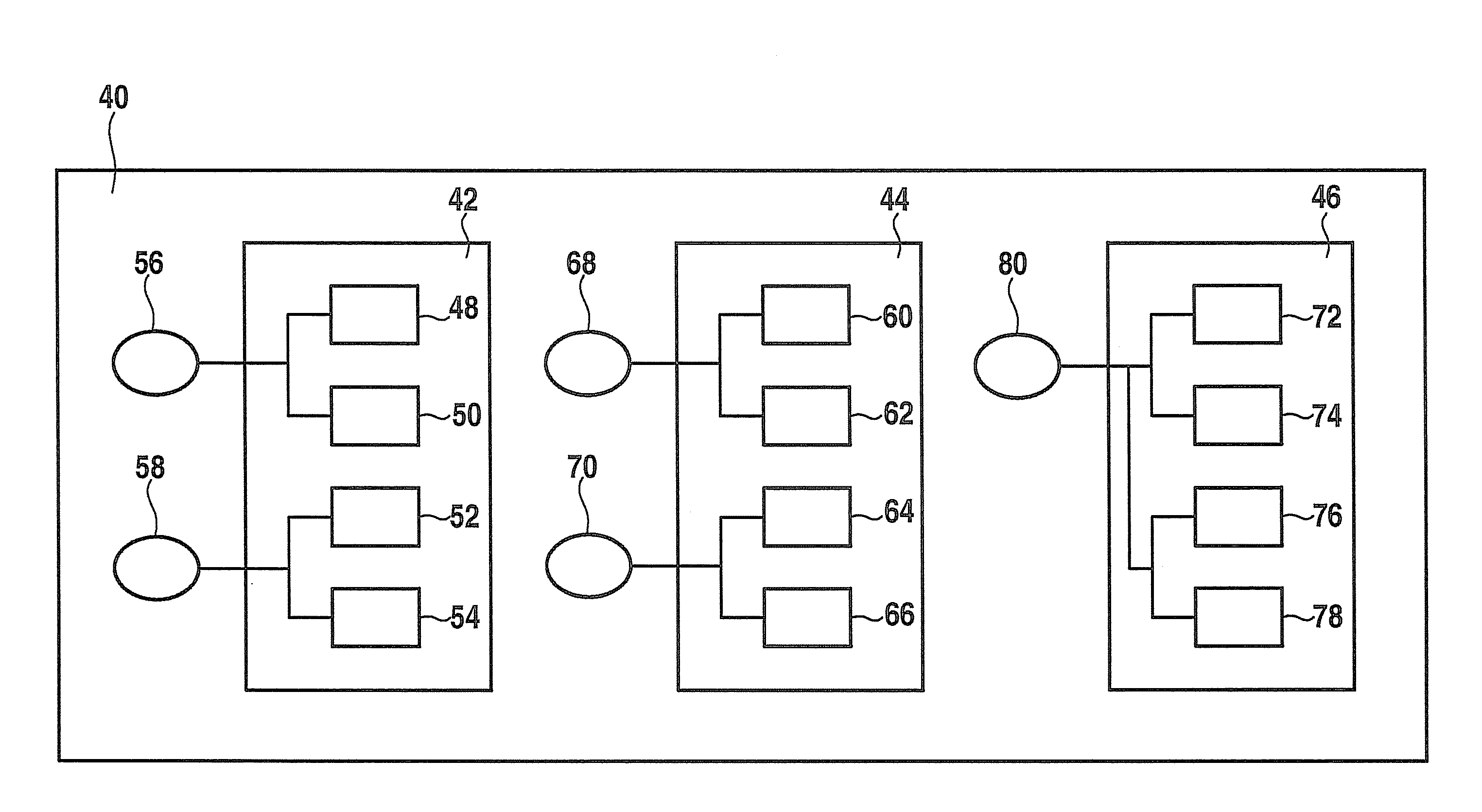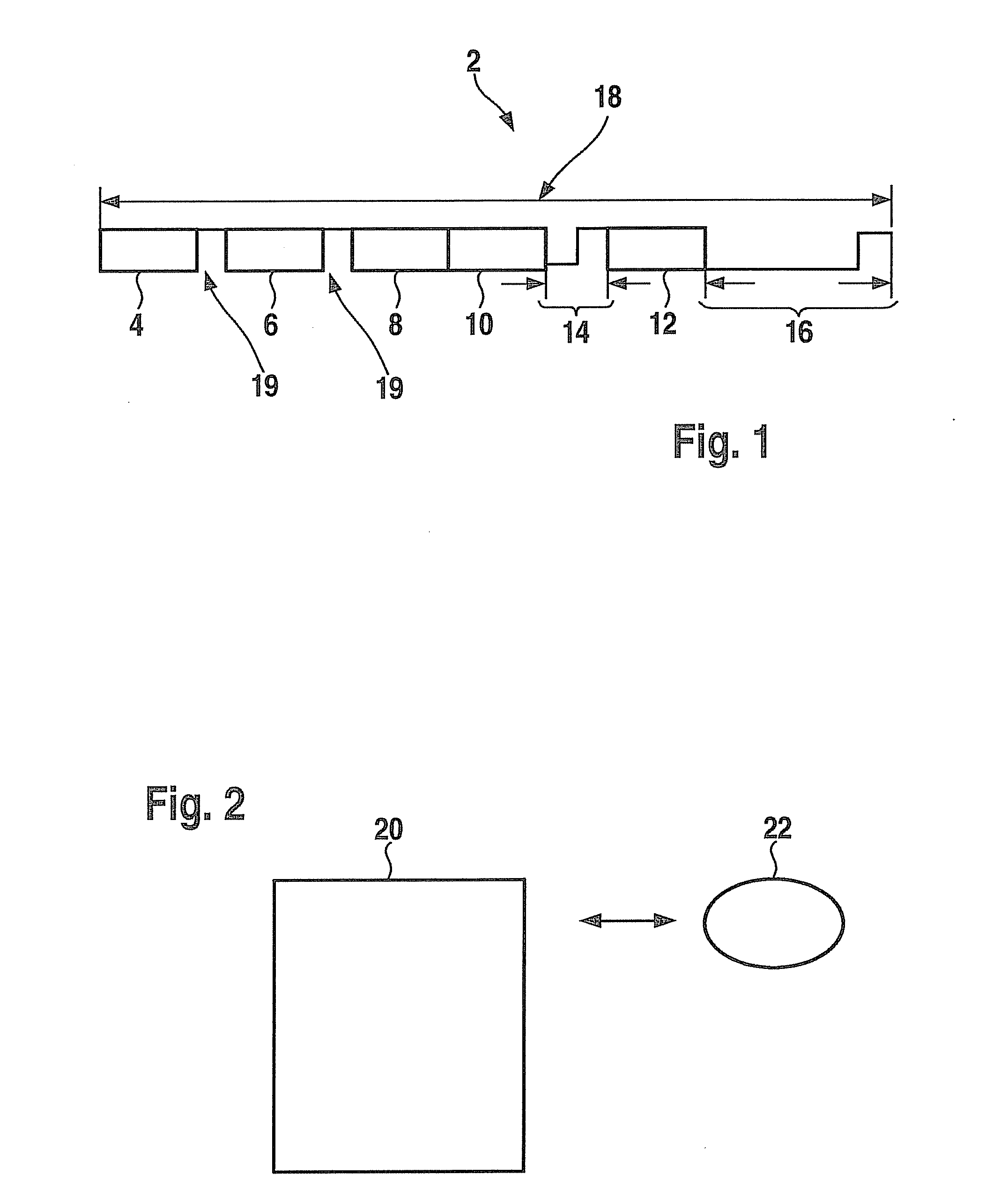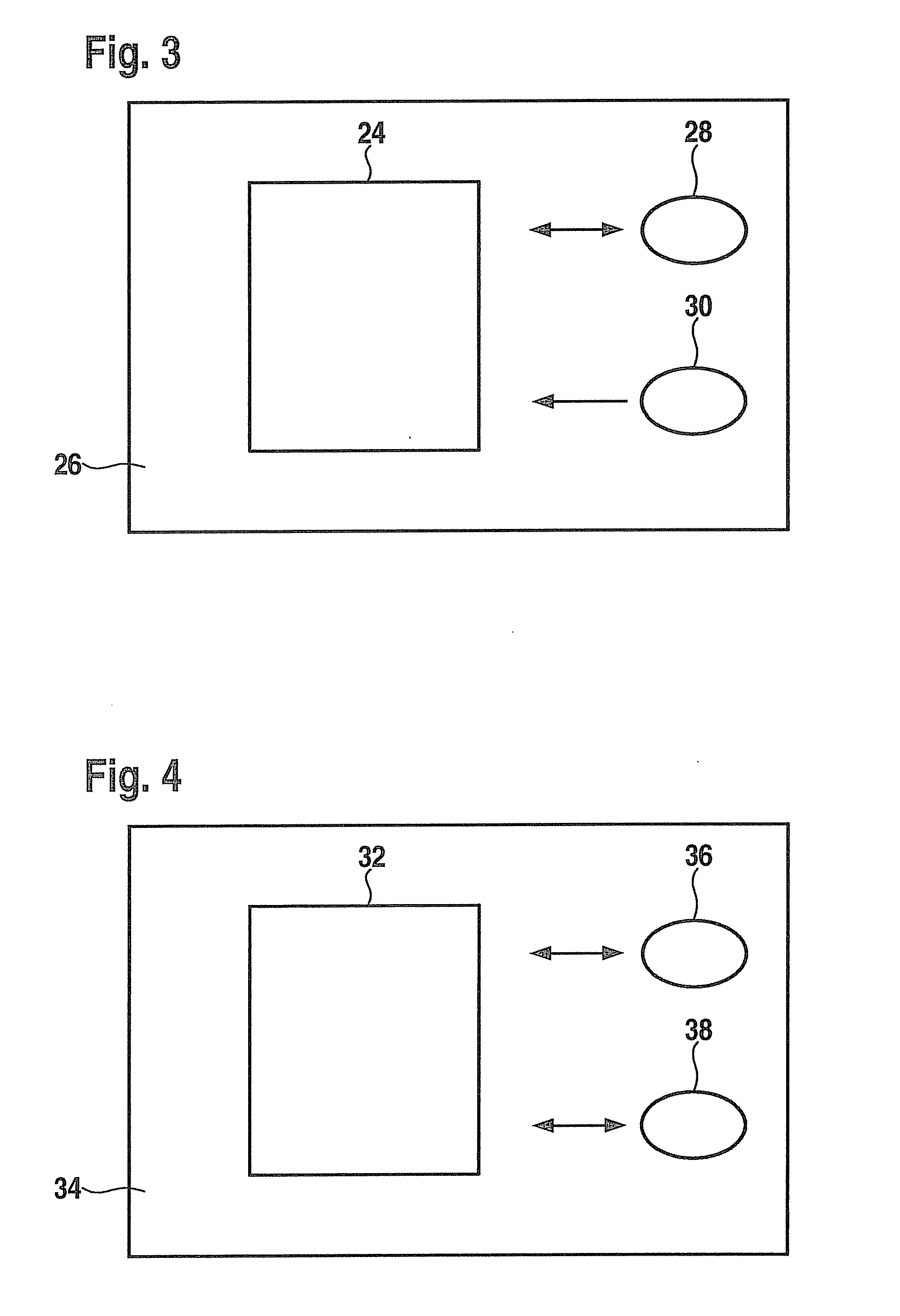Method for handling data
a data and data technology, applied in multiplex communication, instruments, generating/distributing signals, etc., can solve the problems of data transmission in time-delayed and discontinuous manner, and achieve cost-effective effects
- Summary
- Abstract
- Description
- Claims
- Application Information
AI Technical Summary
Benefits of technology
Problems solved by technology
Method used
Image
Examples
Embodiment Construction
[0038]Example embodiments of the present invention are represented schematically in the drawing, and are described in detail below with reference to the drawing.
[0039]FIG. 1 shows an example embodiment of a serial protocol 2 for valve control of two valves, the protocol having one data block 4, 6, 8, 10, 12 respectively for one task respectively, and one frequency or period duration per valve. In this context, the following is provided: a first data block 4 for a “valve control parameter value 1,” a second data block 6 for a “valve control parameter value 2,” a third data block 8 for a “valve control parameter value 3,” a fourth data block 10 for a “valve control parameter value 4,” and a fifth data block 12 for “aux,” in which auxiliary information for different functions is stored. This auxiliary information is provided for data synchronization, for controlling monitoring and test procedures, or for turning on and off valves and other functions, for example. Existing protocol 2 fu...
PUM
 Login to View More
Login to View More Abstract
Description
Claims
Application Information
 Login to View More
Login to View More - R&D
- Intellectual Property
- Life Sciences
- Materials
- Tech Scout
- Unparalleled Data Quality
- Higher Quality Content
- 60% Fewer Hallucinations
Browse by: Latest US Patents, China's latest patents, Technical Efficacy Thesaurus, Application Domain, Technology Topic, Popular Technical Reports.
© 2025 PatSnap. All rights reserved.Legal|Privacy policy|Modern Slavery Act Transparency Statement|Sitemap|About US| Contact US: help@patsnap.com



